#57 in Vietnam
Bánh Đa Cua: Basic Information
Pronunciation
Alternative Name(s)
Dish Type
Course
Mealtime
Popular Bánh Đa Cua Variations
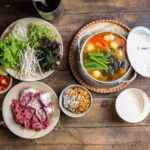
Lẩu Cua Đồng
Bánh Đa Cua: Ingredients and Preparation
Main Ingredients
Main Cooking Method
Preparation Process
Bánh Đa Cua: A Deep Dive
Cultural Significance
Taste
Texture
Aroma
Color
Serving Style
Serving Temperature
Accompaniment
Occasions
Seasons
Special Diets
Calories
Popularity
Popular Similar Dishes
- Bún Riêu Cua
- Bánh Canh Cua
Popular Dining Area
Bánh đa cua is a famous Vietnamese noodle soup originating in the northern region, specifically the coastal city of Hai Phong.
It features a type of locally made flat rice noodle called bánh đa. (Bánh đa is also the name of a Northern Vietnamese rice paper variety, which has no connection with bánh đa cua).
The other main ingredients of bánh đa cua are a rich broth made from mixing pork bone stock and crab stock, blanched vegetables, and various protein-rich toppings. The two most common add-ons are crab meat and chả lát lốt (grilled meat wrapped in betel leaves).
Bánh đa cua is a traditional dish and street food with diverse flavors and a colorful appearance.
Besides the classic version with crab, this Hai Phong specialty comes in two other variations: lẩu cua đồng (paddy crab hot pot) and canh bánh đa đỏ tôm sườn (bánh đa noodle soup with pork and shrimp).
I will tell you more about the aspects of bánh đa cua, such as its main ingredients, advantages, and disadvantages. I will also delve into common queries about this Vietnamese noodle soup and suggest similar dishes.
Key Points
What Are the Main Ingredients of Bánh Đa Cua?
Bánh đa cua often consists of the following 5 types of ingredients:
| Ingredients | Description |
|---|---|
| Bánh đa noodles | Flat rice noodles Has a beautiful reddish-orange color Available in packaged or dried form in many supermarkets in Northern Vietnam or online stores |
| Crabs | Suitable varieties: paddy crabs and mud crabs (green and orange mud crabs) Female crabs are preferred Minced crab shells and tomalley (crab mustard) are used to make the broth Crab meat filtered from the minced crabs goes into the toppings |
| Broth | Minced crabs, pork bones, shrimp, tomatoes, tamarind, mushrooms (optional), and various condiments (especially shrimp paste) A mix of sweet, savory, and tangy flavors |
| Vegetables | Rau nhút (water mimosa) or water spinach |
| Toppings | Crab meat, chả lá lốt (grilled meat wrapped in betel leaves), eggs, cooked pork knuckles, fishcakes, etc. |
From these ingredients, can you guess the upsides and downsides of bánh đa cua? Let’s find out now!
Pros and Cons of Eating Bánh Đa Cua
Bánh đa cua has the following strengths and weaknesses:
Pros
Cons
You nearly know everything there is to know about bánh đa cua; check out the FAQs to complete your understanding of this dish!



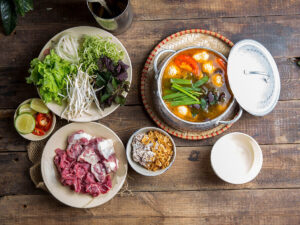
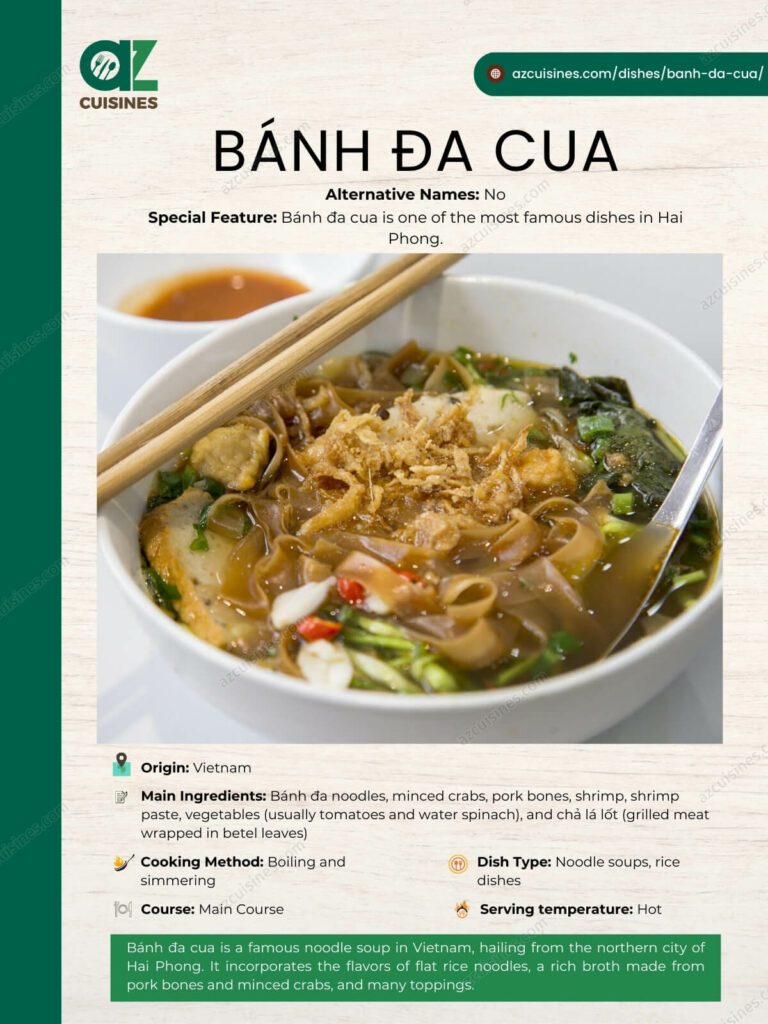
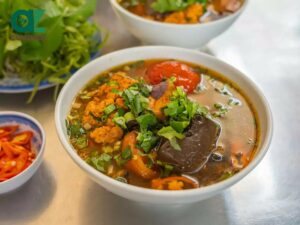
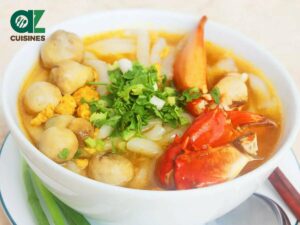
Truc Tran (Kris)
Senior Food Editor
Expertise
Home Cooking, Meal Planning, Recipe Development, Baking and Pastry, Food Editor, Cooking-video Maker, Vietnamese Food Evaluation Expert
Education
Truc Tran (Kris), an experienced food writer and editor, is great at exploring and describing global cuisines, from simple street food to fancy dining. In her writing, she skillfully mixes different flavors, cooking methods, and culinary traditions, showing the unique character of various cultures through their food and drinks. On azcuisines.com, Kris highlights her knowledge, especially in Asian cuisine and worldwide traditional dishes.